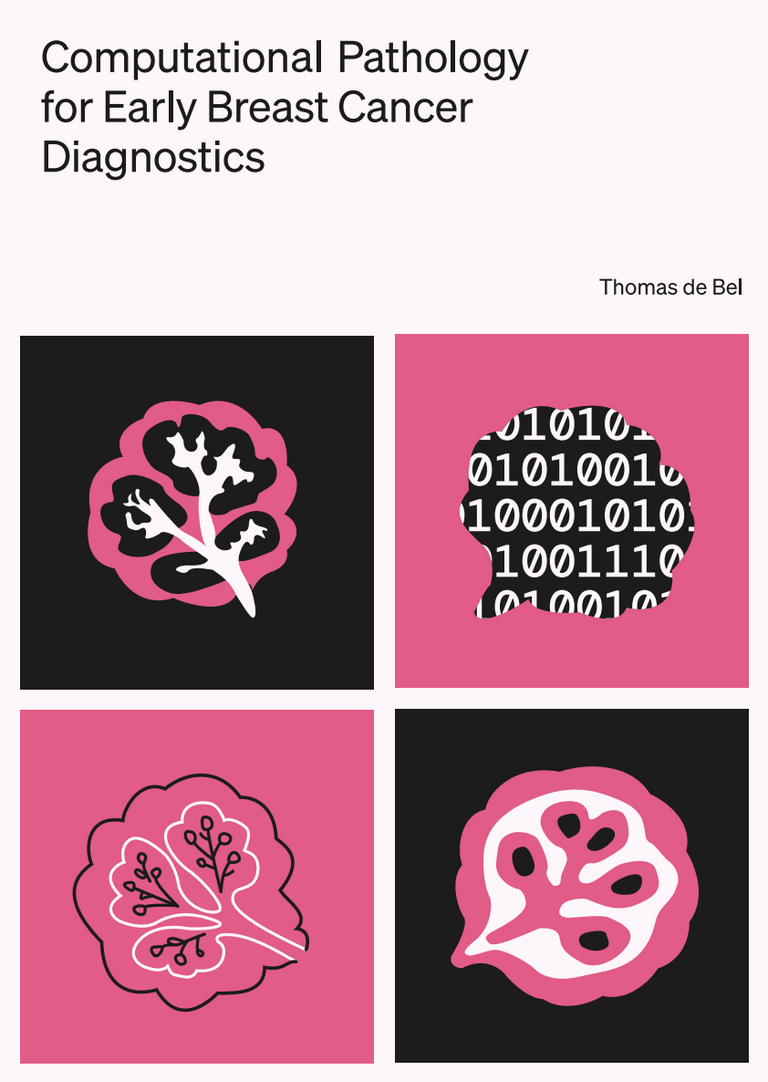Computational Pathology for Early Breast Cancer Diagnostics
T. de Bel
- Promotor: J. van der Laak, G. Litjens and N. Karssemeijer
- Graduation year: 2025
- Radboud University, Nijmegen
Abstract
In Chapter 2, we show an approach for stain normalization in digital histopathology using CycleGANs. By modifying the CycleGAN architecture, including residual learning, we achieve improved training stability and superior segmentation performance across datasets from multiple centers. Experiments on PAS-stained renal tissue demonstrate the method's ability to handle non-linear stain variations more effectively than traditional augmentation and stain normalization techniques. In Chapter 3, we further enhance the CycleGAN architecture by incorporating residual connections to improve stability and effectiveness. This chapter evaluates the approach on colon and kidney tissue datasets from six centers, demonstrating improved segmentation accuracy compared to non-normalized data and standard CycleGANs. These results underscore the value of tailored architectures for reducing variability in histopathology datasets. Chapter 4 shifts focus to breast tissue analysis, introducing a convolutional neural network (CNN) for the automated segmentation and quantification of terminal duct lobular units (TDLUs). Using 174 biopsies, we extract nine quantitative features and link them to breast cancer risk, breast density, and menopausal status. This chapter demonstrates the potential of deep learning to provide objective and reproducible measures for risk prediction in benign breast disease. In Chapter 5, we extend the work on TDLU segmentation to investigate morphologic differences between parous and nulliparous breast tissues. Using the same CNN, we quantify features such as TDLU counts and immune cell activity, revealing postpartum changes with implications for breast cancer risk. These results highlight the versatility of the developed framework in analyzing diverse tissue morphologies. Finally, in Chapter 6, we provide a comprehensive discussion of the insights taken from the previous chapters in the context of today's state of computational pathology. Finally, we extend our perspective on potential developments and challenges that we think will arise in the field over the next five years. This chapter serves not only as a synthesis of our work but also as an exploration of the future landscape of computational pathology.
